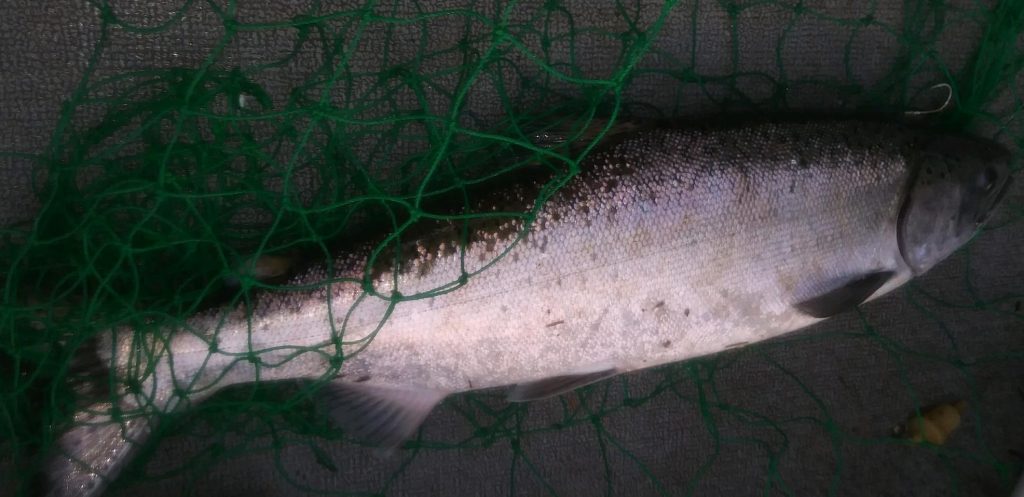By Jessica Linnell, Asst. Professor of Practice, OSU Extension, Family & Community Health
It’s time for fall salmon! If you are planning to catch your own or purchase from your favorite fishmonger, think about canning some to enjoy delicious salmon all year long. Having salmon on-hand can save time in preparing healthy meals. Canned fish is also great protein to have stored in case of emergencies.
Canned salmon can be used in many different dishes and the combinations are endless. Salmon and pasta is a great combination. Add canned salmon to macaroni and cheese. Canned salmon is a great addition to your favorite macaroni salad recipe for a great protein-packed lunch. Canned salmon and pesto sauce make a winning combination.
Canned salmon is also a great protein for salads. Consider making a Caesar salad with romaine lettuce, tossed with a dressing of egg yolks, olive oil, anchovies, and garlic, and then top with canned salmon, croutons and parmesan cheese. Another great way to enjoy canned salmon is in soups and chowder.

If you enjoy canning and would like to teach others, the Oregon State University Extension Office is offering a Master Food Preserver course beginning October 17th. This program trains and certifies adult volunteers in proper food preservation and safe food handling techniques. Course fees are $125 with volunteering, $250 without volunteering. Register at http://bit.ly/TillamookFoodPreservation. For more information call 503-842-3433 or email nancy.kershaw@oregonstate.edu.
The following is a Pacific Northwest Extension Publication recipe that is research-tested to ensure high quality and safety.
Recipe Title: Home-canned salmon
Recipe Source: Pacific Northwest Extension, PNW 194 Canning Seafood
Time for preparation (including preparation and cooking): 100 minutes for processing, plus additional time to catch and filet your fish
Ingredients & equipment
- Raw salmon
- Pressure canner
- Pint or half-pint jars
Directions:
These instructions are for plain, raw fish. To can smoked fish, see PNW 450 Canning Smoked Fish at Home. This recipe is for salmon, trout, and other fish, except tuna.
- Bleed and eviscerate fish immediately after catching (never more than 2 hours after they have been caught.) Chill the cleaned fish immediately and keep on ice until you are ready to can.
- If the fish is frozen, thaw completely in the refrigerator before canning.
- Before you can, remove the head, tail and fins. Wash fish carefully in cold water. Split fish lengthwise. Cut into lengths suitable for jars. (About ¾ pound of filleted fish will fill one pint jar.) The bones can be left in and the skin can be left on for canning, or they can be removed. For halibut, remove the bones and skin.
- Pack fish tightly into hot half-pint or pint jars, leaving 1-inch headspace. If desired, add 1-teaspoon salt per pint. Do not add liquids.
- Wipe rims of jars with a paper towel dampened with vinegar. Adjust lids.
- Process in a pressure canner as follows:
- Dial gauge pressure canner, in pint or half-pint jars:
Process for 100 minutes. Canner pressure should be 11lb at 0-2000 feet elevation, 12lb at 2001-4000 feet elevation, 13 lb at 4001-6000 feet elevation, and 14 lb over 6000 feet elevation.
- Weighted-gauge pressure canner, in pint or half-pint jars:
Process for 100 minutes. Canner pressure should be 10 lb at 0-1000 feet elevation, or 15 lb at 1000 feet elevation or above.
Notes: For more information on the use of pressure canners or to have your pressure gauge tested, visit the Oregon State University Extension Service office at 4506 3rd Street in Tillamook.

